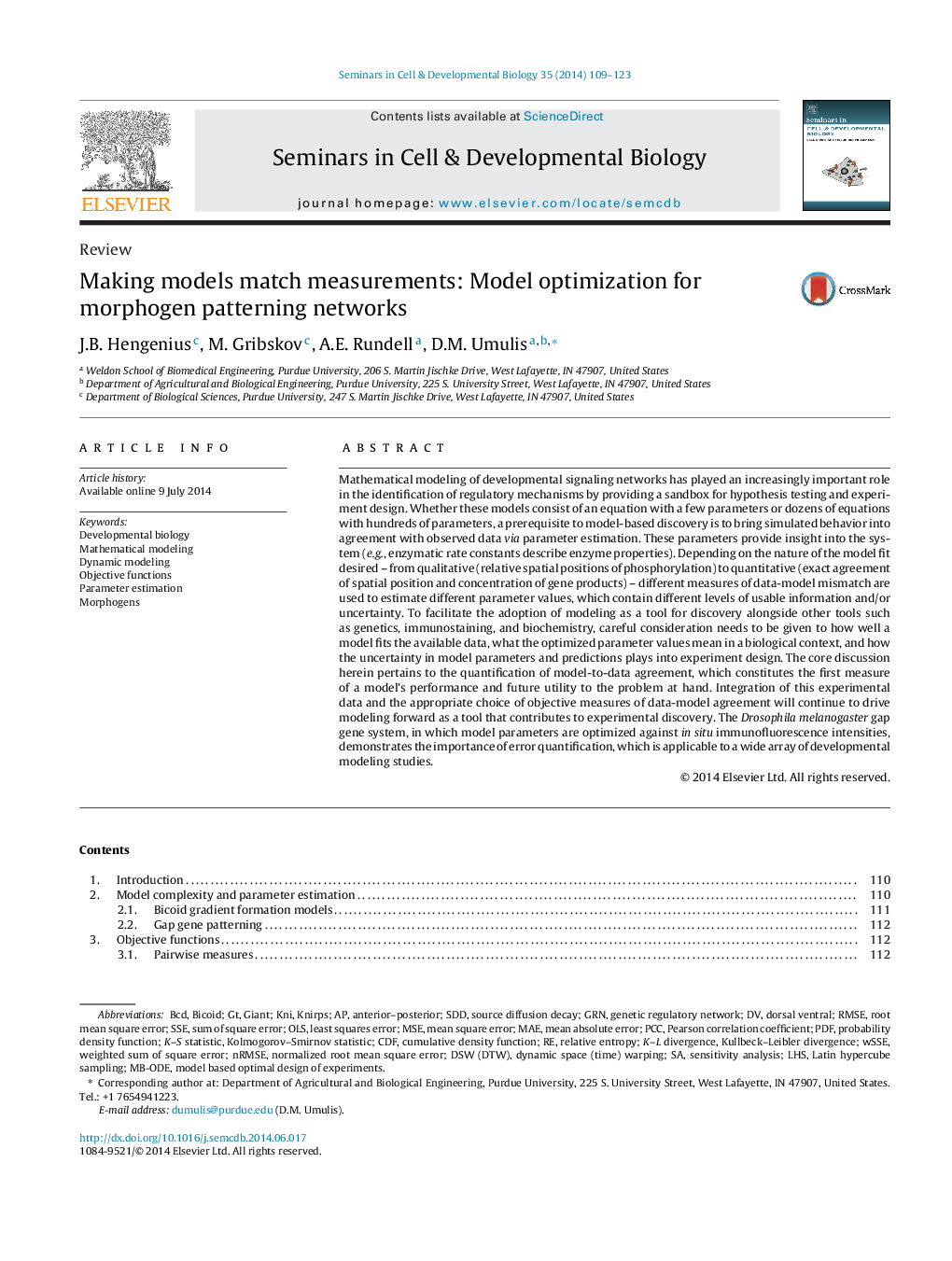| کد مقاله | کد نشریه | سال انتشار | مقاله انگلیسی | نسخه تمام متن |
|---|---|---|---|---|
| 8480565 | 1551387 | 2014 | 15 صفحه PDF | دانلود رایگان |
عنوان انگلیسی مقاله ISI
Making models match measurements: Model optimization for morphogen patterning networks
ترجمه فارسی عنوان
مدل سازی مدل ها: بهینه سازی مدل برای شبکه های الگوریتم مورفوژن
دانلود مقاله + سفارش ترجمه
دانلود مقاله ISI انگلیسی
رایگان برای ایرانیان
کلمات کلیدی
PCCSDDKolmogorov–Smirnov statisticMorphogensSSEOLSNRMSEBCDMSELHSRMSEkniCDFdorsal ventralRelative entropy - آنتروپی نسبیParameter estimation - برآورد پارامترMAE - بلهBicoid - بیکویدProbability density function - تابع چگالی احتمالcumulative density function - تابع چگالی تجمعیSensitivity analysis - تحلیل حساسیتObjective functions - توابع هدفnormalized root mean square error - خطای میانگین ریشه نرمال شدهRoot mean square error - ریشه میانگین خطای مربعDevelopmental biology - زیست شناسی تکاملیGenetic regulatory network - شبکه نظارتی ژنتیکیPearson correlation coefficient - ضریب همبستگی پیرسونGiant - غولanterior–posterior - قدامی-خلفیMathematical modeling - مدل سازی ریاضیDynamic modeling - مدل سازی پویاMean Absolute Error - میانگین خطا مطلقMean Square Error - میانگین مربع خطاLatin hypercube sampling - نمونه برداری لاتین هپقوبPdf - پی دی افKNIRPS - کودکانGRN - گرین
موضوعات مرتبط
علوم زیستی و بیوفناوری
بیوشیمی، ژنتیک و زیست شناسی مولکولی
بیولوژی سلول
چکیده انگلیسی
Mathematical modeling of developmental signaling networks has played an increasingly important role in the identification of regulatory mechanisms by providing a sandbox for hypothesis testing and experiment design. Whether these models consist of an equation with a few parameters or dozens of equations with hundreds of parameters, a prerequisite to model-based discovery is to bring simulated behavior into agreement with observed data via parameter estimation. These parameters provide insight into the system (e.g., enzymatic rate constants describe enzyme properties). Depending on the nature of the model fit desired - from qualitative (relative spatial positions of phosphorylation) to quantitative (exact agreement of spatial position and concentration of gene products) - different measures of data-model mismatch are used to estimate different parameter values, which contain different levels of usable information and/or uncertainty. To facilitate the adoption of modeling as a tool for discovery alongside other tools such as genetics, immunostaining, and biochemistry, careful consideration needs to be given to how well a model fits the available data, what the optimized parameter values mean in a biological context, and how the uncertainty in model parameters and predictions plays into experiment design. The core discussion herein pertains to the quantification of model-to-data agreement, which constitutes the first measure of a model's performance and future utility to the problem at hand. Integration of this experimental data and the appropriate choice of objective measures of data-model agreement will continue to drive modeling forward as a tool that contributes to experimental discovery. The Drosophila melanogaster gap gene system, in which model parameters are optimized against in situ immunofluorescence intensities, demonstrates the importance of error quantification, which is applicable to a wide array of developmental modeling studies.
ناشر
Database: Elsevier - ScienceDirect (ساینس دایرکت)
Journal: Seminars in Cell & Developmental Biology - Volume 35, November 2014, Pages 109-123
Journal: Seminars in Cell & Developmental Biology - Volume 35, November 2014, Pages 109-123
نویسندگان
J.B. Hengenius, M. Gribskov, A.E. Rundell, D.M. Umulis,
